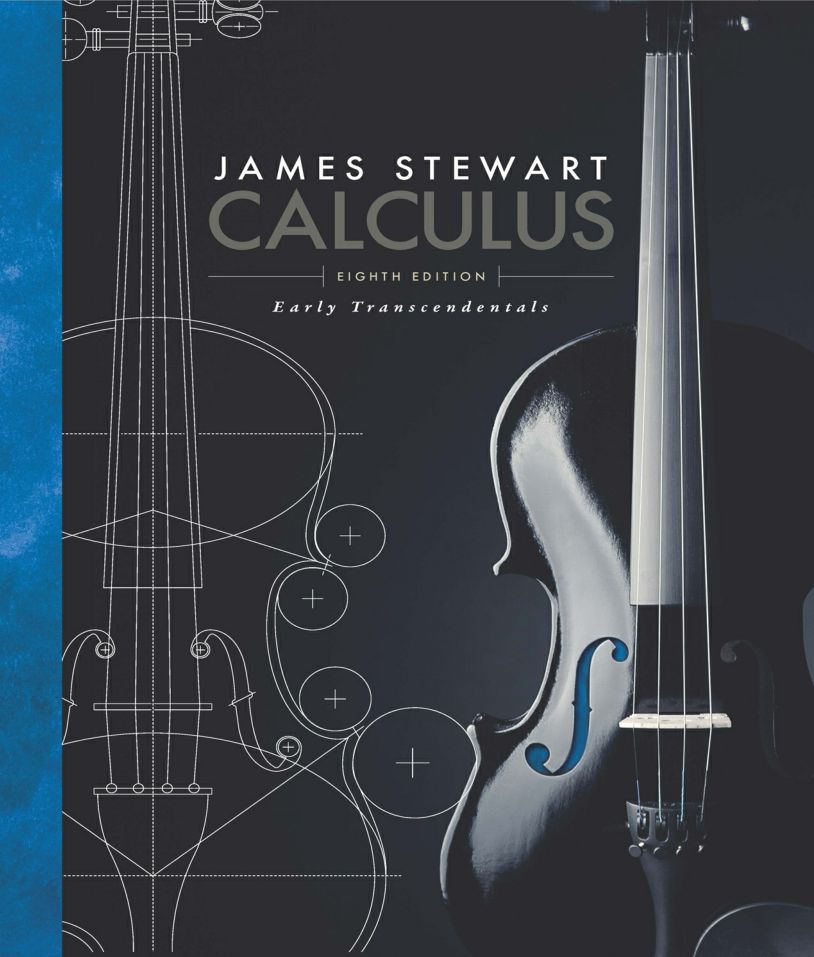Unlocking The World Of Mathematics: The Significance Of James Stewart's Calculus 8th Edition Early Transcendentals
In the realm of mathematics, calculus stands as a cornerstone of understanding and application across various fields, including science, engineering, economics, and more. Among the numerous resources available for students and educators alike, James Stewart's "Calculus 8th Edition Early Transcendentals" has emerged as a leading text that captures the essence of calculus while providing thorough explanations and practical applications. This book has become a staple in academic institutions, making it essential for aspiring mathematicians and professionals.
The 8th edition of Stewart's calculus textbook not only adheres to rigorous academic standards but also incorporates modern teaching methodologies and real-world applications. By bridging the gap between theoretical concepts and practical implementations, this edition ensures that learners can grasp complex ideas with ease. Its user-friendly approach and comprehensive content make it an invaluable resource for students at various levels of expertise.
In this article, we will explore the key features of "James Stewart Calculus 8th Edition Early Transcendentals," delve into its significance in the academic community, and answer some common questions regarding its benefits and usage. Whether you are a student preparing for exams or an educator seeking effective teaching tools, this article will provide you with insights into how this textbook can enhance your understanding of calculus.
What Makes James Stewart's Calculus 8th Edition Unique?
James Stewart's "Calculus 8th Edition Early Transcendentals" stands out for several reasons:
- Comprehensive Coverage: The book covers all fundamental concepts in calculus, including limits, derivatives, integrals, and series.
- Engaging Examples: Real-world problems and examples are integrated throughout to enhance comprehension.
- Visual Learning: The use of graphs, illustrations, and diagrams aids in visual learning and understanding complex functions.
- Innovative Technology: Accompanying online resources allow for interactive learning opportunities.
How Does the Early Transcendentals Approach Benefit Students?
The "Early Transcendentals" approach offers a unique perspective that enables students to grasp essential concepts sooner. By introducing transcendental functions early in the learning process, students are equipped with the tools to tackle more complex problems right from the beginning. This method fosters a deeper understanding of calculus and its applications.
What Are the Key Features of the 8th Edition?
The 8th edition of this renowned textbook comes with several enhancements:
- Updated content reflecting the latest advancements in calculus.
- New exercises and problems that challenge students' critical thinking skills.
- Improved layout and design for better readability.
- Enhanced online resources for supplementary learning.
Who is James Stewart?
James Stewart was a prominent mathematician and educator, widely recognized for his contributions to the teaching and understanding of calculus. His textbooks have influenced countless students and educators worldwide, making complex mathematical concepts accessible and engaging.
What Is James Stewart's Biography?
| Detail | Information |
|---|---|
| Name | James Stewart |
| Born | February 29, 1941 |
| Profession | Mathematician, Author, Educator |
| Education | Bachelor's degree from the University of Toronto, Master's and Ph.D. from Stanford University |
| Notable Works | Calculus, Calculus: Early Transcendentals |
| Death | December 3, 2020 |
How Did Stewart's Work Impact Calculus Education?
James Stewart's textbooks, particularly "Calculus 8th Edition Early Transcendentals," have transformed calculus education by providing clear explanations, relatable examples, and a focus on problem-solving techniques. His approach emphasizes understanding rather than rote memorization, which has profoundly impacted how calculus is taught in classrooms around the globe.
What Are Students Saying About James Stewart Calculus 8th Edition Early Transcendentals?
Feedback from students and educators highlights the effectiveness of this textbook in facilitating understanding and mastery of calculus:
- Students appreciate the clarity of explanations and the logical progression of topics.
- The inclusion of diverse problem sets helps reinforce learning.
- Many find the accompanying online resources to be beneficial for additional practice.
- Educators value the structured layout that aids in lesson planning.
Is James Stewart Calculus 8th Edition Early Transcendentals Suitable for All Learners?
Yes, this textbook is designed to cater to a wide range of learners, from high school students to college undergraduates. Its structured approach, combined with a variety of examples and exercises, makes it accessible for beginners while still challenging for advanced learners.
Where Can You Find James Stewart Calculus 8th Edition Early Transcendentals?
This widely used textbook is available in various formats:
- Online retailers such as Amazon and Barnes & Noble
- Local bookstores and academic libraries
- Digital formats, including eBooks and interactive platforms
Why Should You Choose James Stewart Calculus 8th Edition Early Transcendentals for Your Studies?
Choosing "James Stewart Calculus 8th Edition Early Transcendentals" as your primary resource can lead to significant benefits:
- Comprehensive understanding of calculus concepts.
- Improved problem-solving skills through diverse practice problems.
- Access to modern teaching methodologies that enhance learning.
- Supportive online resources for additional practice and learning.
In conclusion, "James Stewart Calculus 8th Edition Early Transcendentals" is not just a textbook; it is a powerful tool that equips students with the knowledge and skills necessary to excel in calculus. With its clear explanations, practical examples, and innovative approach to teaching, it continues to be a vital resource for learners and educators alike. Whether you are just beginning your calculus journey or looking to refine your knowledge, this textbook is an excellent choice that promises to enrich your understanding and application of mathematics.
Article Recommendations
- What Happened To Adam Cartwright
- Glenn Close Michael Douglas
- Who Is Felicity In Arrow
- How Old Was Michael J Fox Back To The Future
- Ideas For Duo Day
- Coincidencias Con Donal Trump
- How Many Female Governors
- Birthday January 16 Astrologyl
- Jerry Lorenzo Dad
- What Nationality Is Nico Iamaleava




